Want to sell your products online? You picked a good time to start. More people are shopping online than ever before, which means there’s real money to be made if you do it right.
Here’s the thing though. I’ve watched tons of people mess this up. They rush into building their ecommerce website without understanding what they’re doing. Then they wonder why nobody’s buying anything.
The problem isn’t that it’s too hard. The problem is there are too many choices. You’ve got dozens of ecommerce development software options. Everyone says their ecommerce software solutions are the best. How do you know which ecommerce site builder to pick?
That’s what this guide is for. I’m going to show you how to choose the best ecommerce platform for what you’re selling. No fluff, no confusing tech talk. Just the stuff that actually matters.
When you’re done reading this, you’ll know exactly how to get your online store up and running the right way.
Read More: To Know About What Is Ecommerce
Planning Phase for Development of Ecommerce Website
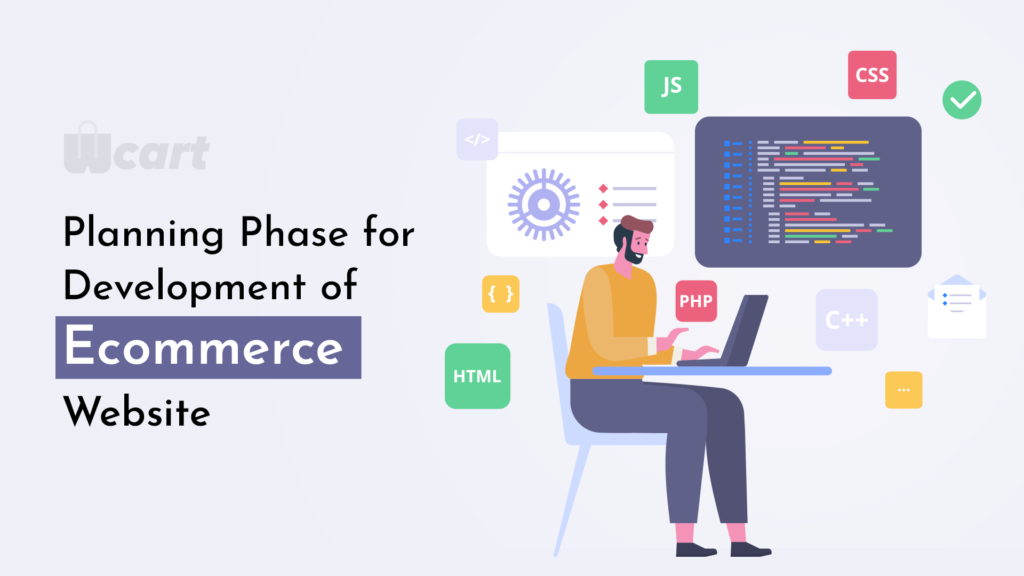
The planning phase is where the dream of a successful eCommerce website becomes a reality.
Conducting market research

Conducting market research is a crucial step in the planning phase of e-commerce website development. It involves collecting and analyzing information about the target market, competitors, and industry trends to inform the website development plan.
Market research helps businesses understand the needs and preferences of their target audience, which is essential for creating a website that resonates with them. This information can be collected through surveys, focus groups, customer feedback, and social media analytics.
Additionally, researching competitors provides insight into the current market landscape and helps businesses identify opportunities to differentiate themselves. It can also help businesses understand what works well and what doesn’t in terms of website design, product offerings, and pricing.
Industry trends research is also essential as it helps businesses stay current with emerging technologies and consumer preferences. For example, with the rise of mobile commerce, businesses need to ensure their e-commerce websites are optimized for mobile devices.
Your First Sale is Waiting – Build Your Ecommerce Website Right Now!
Identifying target audience

Identifying the target audience is a crucial step in the planning phase of e-commerce website development. The target audience refers to the group of people that the website aims to attract and serve.
To identify the target audience, businesses need to consider factors such as age, gender, location, interests, and purchasing habits. They can collect this information through market research, customer surveys, and analyzing website analytics data.
By identifying the target audience, businesses can tailor the website’s design, content, and product offerings to meet their specific needs and preferences. For example, if the target audience is primarily young adults, the website may feature more trendy and affordable products and have a more modern design. On the other hand, if the target audience is primarily seniors, the website may feature more practical and functional products and have a simpler and more straightforward design.
By understanding the target audience, businesses can create a more effective marketing strategy and ensure that the e-commerce website attracts the right customers and meets their expectations.
Defining website objectives
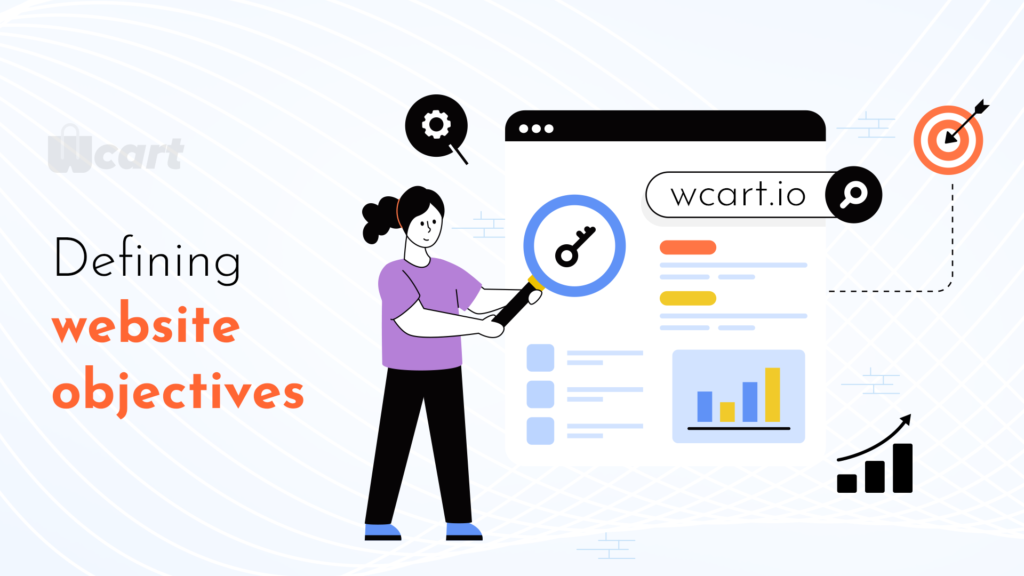
Defining website objectives is an essential step in the planning phase for the Development of an Ecommerce Website. Website objectives are the specific goals that a business aims to achieve through its website. These objectives should be specific, measurable, achievable, relevant, and time-bound (SMART).
There are various website objectives that a business may have, such as:
- Increasing website traffic
- Improving website conversion rates
- Increasing average order value
- Expanding the customer base
- Increasing customer loyalty and retention
- Enhancing brand awareness and visibility
By defining clear website objectives, businesses can focus their efforts on achieving specific goals and measure their progress toward them. For example, if the objective is to increase website traffic, the business may focus on search engine optimization (SEO), content marketing, and social media marketing.
Defining website objectives also helps businesses prioritize their website development efforts and ensure that every aspect of the website contributes to achieving these goals. For example, if the objective is to improve website conversion rates, the website design should focus on creating a seamless user experience, and the product pages should include persuasive product descriptions and high-quality images.
Overall, defining website objectives is crucial to the success of an e-commerce website as it helps businesses focus their efforts, measure their progress, and ensure that the website aligns with their overall business objectives.
Creating a website development plan

Creating a website development plan is a critical step in the planning phase for the Development of an Ecommerce Website. It involves outlining the steps and resources required to design, develop, and launch the website successfully.
The website development plan should include a timeline of tasks, resources needed, and key performance indicators (KPIs) for measuring the website’s success. The plan should also take into account the target audience and business objectives.
Some essential components of a website development plan include:
- Website design: This includes creating a wireframe and mockup of the website, choosing the right design elements, and ensuring a user-friendly interface.
- Website development: This involves developing the website’s functionality, integrating the payment gateway, and ensuring website security.
- Testing and launch: This includes testing the website’s functionality and usability, ensuring website security, preparing for website launch, and measuring website performance.
- Post-launch: This involves maintaining the website, updating website content, optimizing the website for search engines, marketing the website, and expanding the website’s functionality.
By creating a comprehensive website development plan, businesses can ensure that they have a clear roadmap for building and launching their e-commerce website successfully. The plan can also help them stay on track and make adjustments as necessary to meet business objectives and target audience needs.
Design and Development of Ecommerce Website
Let’s look at the basics of designing and developing an e-commerce website.
Creating a wireframe and mockup
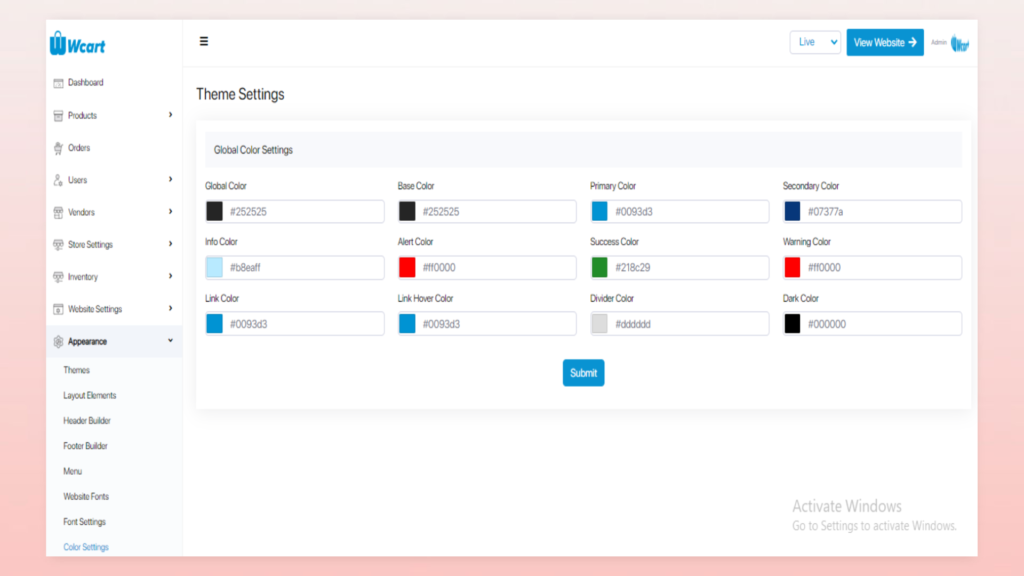
Wireframes help businesses visualize the website’s structure and layout, without getting distracted by the visual design details. These are typically created using tools such as Adobe XD or Sketch, and they show the website’s basic structure, including the navigation, content areas, and user interface elements.
Once the wireframe is complete, the next step is to create a mockup. Mockups are more detailed and include visual design elements such as typography, color schemes, and images. Mockups help businesses to refine their visual design and ensure that it aligns with the branding and target audience.
The Mockups are typically created using graphic design software such as Adobe Photoshop or Illustrator. They allow businesses to visualize the final design and make necessary adjustments before the website is developed.
Creating a wireframe and mockup ensures that businesses have a clear understanding of the website’s design before development begins. It helps to avoid potential design flaws and ensures that the final product meets the desired aesthetics and functionality.
Choosing the right design elements
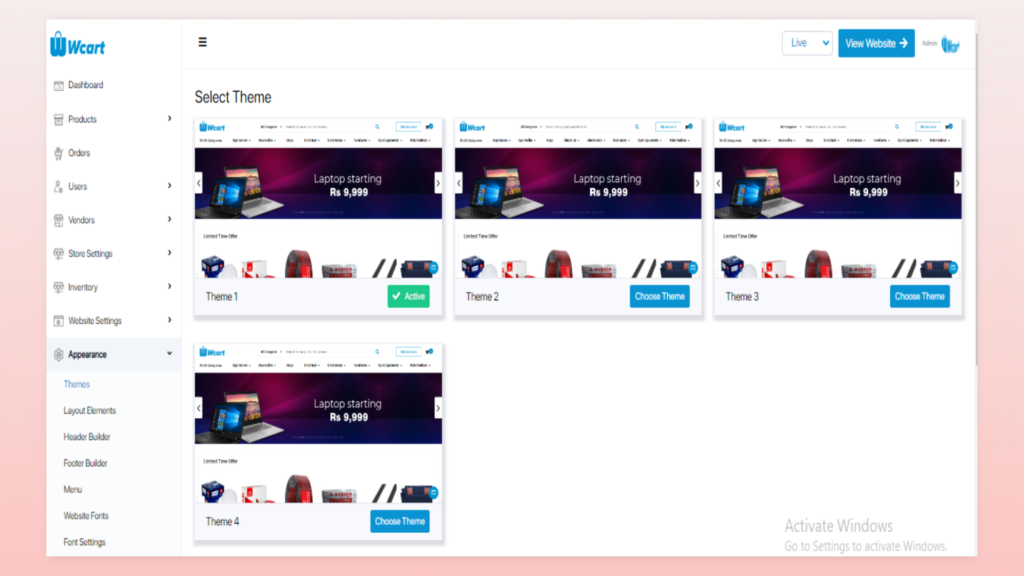
Choosing the right design elements is a critical step in the design and development phase for the Development of an Ecommerce Website. The website’s design creates a positive user experience and establishes a brand identity.
When selecting design elements, businesses need to consider factors such as color, typography, layout, and imagery. These elements should align with the brand’s values and appeal to the target audience.
Color plays a significant role in branding and can evoke certain emotions and feelings. For example, blue is often associated with trust and professionalism, while yellow is associated with happiness and optimism. Typography also plays a crucial role in branding, and businesses need to choose fonts that are legible and reflect the brand’s personality.
The website layout should be intuitive and easy to navigate, with essential information and calls to action prominently displayed. Imagery is also essential and should be high-quality and relevant to the products or services being offered.
When choosing design elements, businesses need to ensure that they align with the overall brand strategy and create a cohesive user experience. A well-designed e-commerce website can establish trust with customers and increase the likelihood of a sale.
Stop Planning, Start Selling – Build Your Ecommerce Website Now!
Creating a user-friendly interface

Creating a user-friendly interface is a critical aspect of the Development of an Ecommerce Website. A user-friendly interface refers to the design and layout of the website that is easy for users to navigate and use.
To create a user-friendly interface, businesses need to consider the following:
- Navigation: The website should have a clear and straightforward navigation menu that allows users to find what they are looking for quickly.
- Visual Design: The website’s design should be visually appealing and consistent with the brand’s image. It should also be easy on the eyes, with a good balance of text and images.
- Mobile Responsiveness: With an increasing number of people using their mobile devices to browse the internet, it’s essential to ensure that the website is mobile-responsive, meaning it adjusts to fit the size of the user’s screen.
- Loading Speed: Slow loading speed can lead to a high bounce rate, so it’s crucial to optimize the website’s loading time to improve the user experience.
- Accessibility: The website should be accessible to users with disabilities, with features such as alt text for images and keyboard navigation.
By creating a user-friendly interface, businesses can improve the overall user experience for the Development of an Ecommerce Website and increase the likelihood of users returning and making a purchase.
Developing the website’s functionality
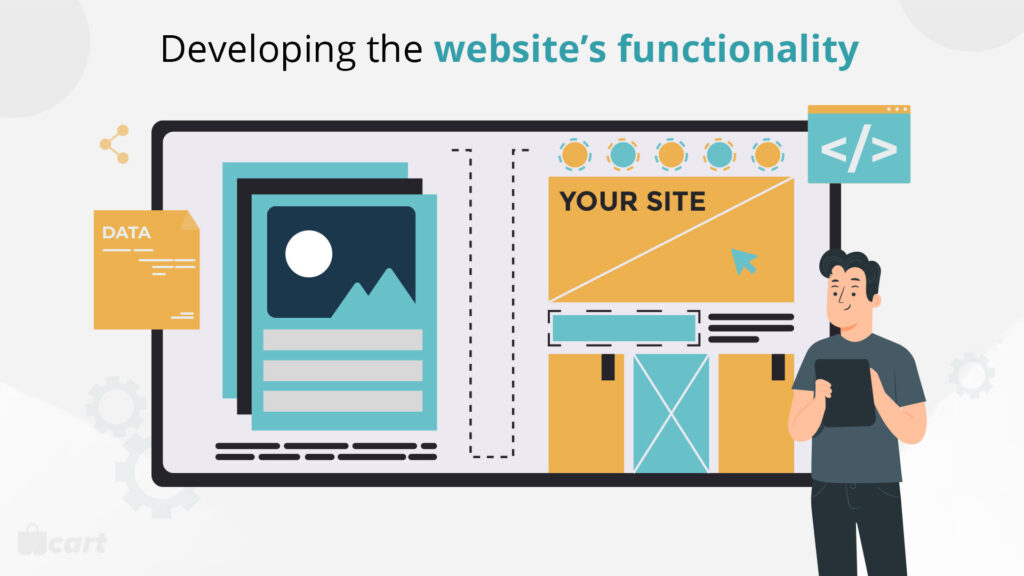
Developing the website’s functionality is a crucial step in the design and development of Ecommerce website development. It involves creating and implementing the features and tools that enable users to browse, search, and purchase products on the website.
Some of the essential functionality elements of an e-commerce website include:
- Product Catalog: This is the section of the website where all the products are displayed, and users can view product details, images, and prices.
- Shopping cart: This feature allows users to add products to their cart and proceed to checkout when they are ready to make a purchase.
- Checkout process: This includes the steps users must follow to complete their purchase, such as entering billing and shipping information and selecting a payment method.
- User accounts: This feature allows users to create accounts, save their shipping and billing information, and view their order history.
- Search functionality: This feature allows users to search for products based on keywords, categories, or other filters.
- Customer support: This includes providing users with options to contact customer support, such as live chat or email, to get help with their orders.
Developing the website’s functionality requires collaboration between designers and developers to ensure that the website’s features are user-friendly, functional, and aligned with the website’s goals and objectives. It’s crucial to test the website’s functionality thoroughly to identify and fix any bugs or issues that could negatively affect the user experience.
Create Your Ecommerce Website and Start Making Money Online!
Testing and Launch Phase
Before launching the website you need to know about the following features.
Ensuring website security
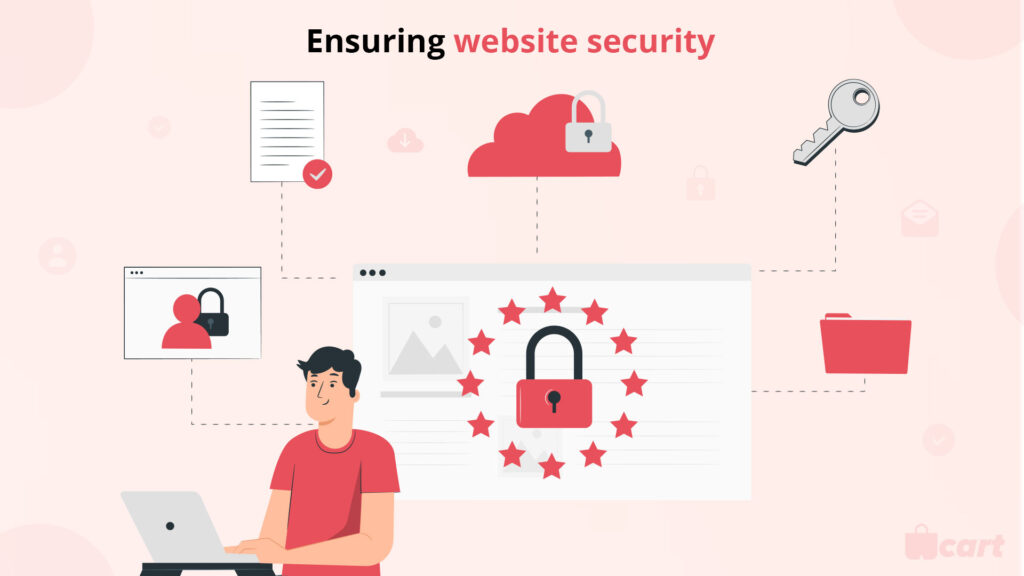
Ensuring website security is a critical aspect of the Development of an Ecommerce Website, especially since online transactions involve the exchange of sensitive information such as credit card details and personal information.
To ensure website security, businesses need to implement several measures such as obtaining an SSL (Secure Sockets Layer) certificate, using strong and unique passwords, and implementing two-factor authentication.
An SSL certificate encrypts data exchanged between the website and the user, protecting it from hackers and other malicious third parties. Strong and unique passwords and two-factor authentication prevent unauthorized access to the website’s backend and protect against hacking attempts.
Additionally, businesses should regularly update their website’s software and plugins to prevent security vulnerabilities that can be exploited by hackers. They can also implement regular security audits to identify and address any potential security risks.
By ensuring website security, businesses can build trust with their customers and protect their sensitive information from unauthorized access. This, in turn, can lead to increased customer loyalty and repeat business.
Preparing for website launch

Preparing for a website launch is a crucial step in the testing and launch phase of e-commerce website development. It involves ensuring that everything is in place before the website goes live to ensure a smooth and successful launch.
Some essential tasks to prepare for the website launch include:
- Testing the website: Before launching the website, it’s crucial to test it thoroughly to ensure that everything is functioning correctly. This includes testing all links, buttons, forms, and payment gateways. Businesses should also test the website on different devices and browsers to ensure that it is responsive and compatible.
- Checking website security: Website security is a crucial aspect of e-commerce website development. Before launch, businesses should ensure that the website is secure and that all sensitive information, such as customer data and payment information, is protected.
- Creating a launch plan: Businesses should create a detailed plan outlining the launch process and timeline. This plan should include tasks such as notifying customers, preparing marketing materials, and monitoring website traffic and performance.
- Preparing customer support: Before launch, businesses should ensure that they have adequate customer support in place to handle any issues or inquiries that may arise. This may include hiring additional staff, setting up a help desk, or implementing chatbots.
- Finalizing website content: Before launch, businesses should ensure that all website content, including product descriptions, images, and pricing, is accurate and up-to-date.
By preparing for a website launch, businesses can ensure that their e-commerce website is ready to go live and attract customers from the outset. A successful launch can help build momentum and establish the website’s credibility in the marketplace.
Launching the website
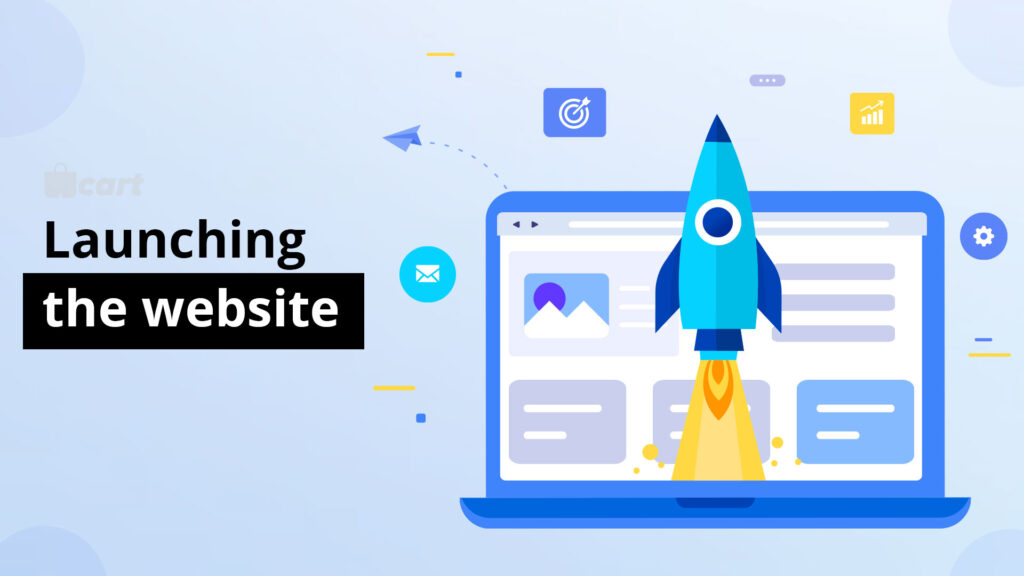
Launching the website is the final phase of the e-commerce website development process, and it involves making the website available to the public.
Before launching the website, it’s essential to conduct thorough testing to ensure that everything is functioning correctly, and there are no technical issues. Testing involves checking the website’s functionality, performance, usability, and compatibility with different devices and browsers.
Once the testing is complete, it’s time to prepare for the website launch. This includes finalizing product offerings, pricing, and payment methods, as well as creating marketing materials such as social media posts, email newsletters, and advertisements.
To launch the website, businesses need to purchase a domain name and web hosting service. They also need to upload the website files to the hosting server and configure the website’s settings, such as SSL certificates, email notifications, and payment gateway integration.
After launching the website, it’s crucial to monitor its performance regularly and address any issues that may arise. This includes checking website traffic, conversion rates, and customer feedback. By monitoring website performance, businesses can identify opportunities for improvement and make adjustments to optimize the website for better results.
Overall, launching the website is an exciting milestone for businesses as it marks the beginning of their online presence and the start of their e-commerce journey.
Post-Launch Phase
After launching of website you need to know about the following features.
Maintaining the website
Maintaining the e-commerce website is an ongoing process that involves regular updates, bug fixes, and security checks to ensure the website functions correctly and stays secure.
Regular updates are necessary to keep the website’s software, plugins, and themes up-to-date. Updates may also be required to add new features and functionality to the website or to fix any bugs or errors that may arise.
Bug fixes are essential to ensure that the website functions correctly and provides a smooth user experience. These may include fixing broken links, improving website speed, and resolving any issues that customers may encounter during the checkout process.
Security checks are crucial to ensure that the website is secure and to protect customer data from potential security breaches. Regular security checks can help identify vulnerabilities in the website’s security and address them promptly.
Content updates are also necessary to keep the website’s information relevant and up-to-date. Businesses should regularly review and update product descriptions, pricing, and promotional offers to keep the website fresh and engaging for customers.
Overall, maintaining the e-commerce website is essential to ensure its ongoing success and to provide customers with a positive online shopping experience.
Updating website content
Updating website content is a crucial aspect of maintaining an e-commerce website. The content on the website needs to be updated regularly to ensure that it stays relevant, engaging, and informative for the target audience.
The website content includes product descriptions, blog posts, news updates, and any other information that is presented on the website. Businesses need to ensure that this content is accurate, up-to-date, and reflects the current state of their business.
Regularly updating website content can also help with search engine optimization (SEO). Search engines tend to favor websites that are updated frequently and feature fresh and relevant content. By regularly updating the website content, businesses can improve their website’s ranking on search engine results pages (SERPs) and attract more organic traffic.
Updating website content also provides an opportunity for businesses to showcase new products, promotions, and events. By keeping the content fresh and engaging, businesses can attract repeat customers and encourage them to make more purchases.
To update website content, businesses need to have a content management system (CMS) in place that allows them to make changes easily. They can also hire a content writer or copywriter to help create new content and ensure that it meets the needs of their target audience.
Optimizing a website for search engines
Optimizing a website for search engines, also known as Search Engine Optimization (SEO), is the process of improving the website’s visibility and ranking on search engine results pages (SERPs). This is a crucial aspect of e-commerce website development, as higher rankings on SERPs can lead to increased website traffic, higher conversion rates, and ultimately, increased sales.
To optimize a website for search engines, businesses need to focus on several factors, including keyword research, on-page optimization, off-page optimization, and technical optimization.
Keyword research involves identifying the keywords and phrases that potential customers are searching for related to the products or services offered on the website. This information can be used to create relevant and high-quality content that incorporates these keywords and phrases, improving the website’s ranking on SERPs.
- On-page optimization involves optimizing the website’s content, including the titles, headings, meta descriptions, and URLs, to make it more accessible and relevant to search engines.
- Off-page optimization involves building high-quality backlinks to the website from other reputable websites. This can improve the website’s authority and relevance in the eyes of search engines, leading to higher rankings on SERPs.
- Technical optimization involves optimizing the website’s technical elements, such as website speed, mobile-friendliness, and security, to improve its overall performance and user experience.
By optimizing a website for search engines, businesses can increase its visibility and attract more organic traffic, ultimately leading to increased sales and revenue.
Marketing the website
Marketing the e-commerce website is an essential part of the post-launch phase of development. It involves promoting the website and its products or services to attract customers and increase sales.
There are various marketing strategies that businesses can use to promote their e-commerce website, including:
- Search engine optimization (SEO): Optimizing the website’s content and structure for search engines to increase organic traffic.
- Pay-per-click (PPC) advertising: Running paid ads on search engines or social media platforms to increase website visibility and drive traffic.
- Content marketing: Creating informative and engaging content, such as blog posts, videos, and social media posts, to attract and engage potential customers.
- Email marketing: Sending targeted emails to customers and subscribers to promote products, offers, and sales.
- Social media marketing: Leveraging social media platforms to reach a wider audience, engage with customers, and promote products.
- Influencer marketing: Collaborating with social media influencers to promote the website and its products to their followers.
It’s essential to develop a marketing plan that aligns with the target audience and the website’s goals. Businesses should regularly measure the effectiveness of their marketing efforts and adjust the strategies accordingly.
Effective marketing can significantly increase website traffic, sales, and revenue, so it’s crucial to invest time and resources in developing a robust marketing strategy.
Conclusion
So that’s everything you need to know about starting your ecommerce website.
It’s not that complicated once you break it down. Sure, you need decent web design and good product photos. Your site has to be easy to use. But honestly, the biggest mistake people make is never starting at all.
I know tons of people who spent forever researching and planning. They wanted everything to be perfect before they launched. Guess what? Most of them still haven’t opened their store.
Don’t do that. Pick a platform, upload your products, and go live. You can fix things as you go. The goal is to build an engaging online store that makes sales, not win a design award.
If you use what I showed you in this guide, you’ll be fine. Your first month might be slow, but that’s normal. Stick with it.
Stop reading and start doing. Go sign up for one of those platforms right now. Your first customer is out there waiting for you.




Leave a Reply